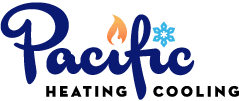We’ve written about the importance of ventilation for your home before, but it’s important to know the differences between ventilation systems and why you should consider “balanced ventilation.”
NEGATIVE AIR PRESSURE
Many times, mechanical ventilation systems are exhaust-only, meaning they expel air out of the house but aren’t designed to bring any air in. When air is removed from the home, negative pressure is created, causing the house to pull in air from the outside via any cracks, gaps, or openings in the building envelope. Anything that pulls air out of the home, such as range hoods, dryers, and fireplaces, can create negative pressure.
There are a lot of things blowing air out of the home with nothing designed to bring air in. The pressurized pull of outdoor air can worsen already existing air leaks. Negative pressure caused by exhaust-only systems can also cause a health hazard by drawing in dangerous combustion gases from your water heater and furnace.
Additionally, the air getting pulled into your home will not be treated or filtered, making your home susceptible to any incoming toxins and contaminants.
NEGATIVE PRESSURE SIGNS:
- Pilot light won’t stay lit
- Flames roll off and out the bottom of the furnace
- Soot around the furnace
- Slow water heater recovery times
Remember, for every cubic foot of air that leaves the house, a cubic foot of air must enter.
WHAT IS BALANCED VENTILATION?
Balanced ventilation, on the other hand, supplies the home with outside air from a fan installed into the central air system. In other words, the supply system is integrated with your existing blower to exhaust and supply an equal amount of air.
When the HVAC system is turned on, the fan brings in outdoor air and mixes it with the indoor air circulating through the system.
The main disadvantage of a balanced whole-home ventilation system is that most fans don’t have variable speed blowers. Additionally, some fans and blowers use a great deal of energy.
Variable-speed supply-side fans can bring in fresh outdoor air without using too much energy. It’s also important to keep in mind that when you bring in air from the outdoor environment, you may also be bringing in unwanted moisture, heat or cold.
That’s where Energy Recovery Ventilators (ERVs) or Heat Recovery Ventilators (HRVs) come in.
ERVS AND HRVS
ERVs and HRVs are very similar. Both systems have two fans, one to exhaust stale indoor air and the other to supply outdoor air.
The incoming air passes through a filter to remove any dust, pollen or outdoor contaminants before sending it into the house. Some HRV and ERV models offer HEPA filtration.
Each air stream flows through a heat exchanger to exchange heat. If cold air is leaving your home, the warm air that enters will transfer its heat to the outgoing air. This keeps the heat out, but the fresh outdoor in.
The two air sources, while separated, exchange heat energy inside of the heat exchanger. An ERV transfers both heat and moisture while an HRV just transfers heat. That’s why HRVs are typically recommended for colder, drier climates, and EVSs for humid climates. It also depends on if you already have a whole-home humidification system.
If you’ve ever heard the term balanced ventilation, you probably already associate it with HRVs and ERVs. They are a great way to provide balanced ventilation for your home.
USE WHOLE-HOME DEHUMIDIFIER FOR SUPPLY AIR
Sometimes, you can supply your home with ventilation using the whole-home humidification system. Consult your installer or manufacturer to see if there is an intake port that leads outdoors. While this can help with supply ventilation and removing humidity, it can also bring in unwanted heat. This can mean a lot more money spent on cooling your home.
WHY VENTILATION IS SO IMPORTANT
Tight, energy-efficient homes boast energy savings, but they may be sealing in more than you think:
- Dust
- Dander
- CO
- Odors
- Volatile Organic Compounds (VOCs)
- Mold and Mildew
- Aerosol Fumes
- Fireplace Smoke
- Cooking Pollutants
Good ventilation systems are able to remove pollutants and humidity quickly. The exchange of indoor air with outdoor air helps maintain a healthier and more comfortable home.
So obviously, ventilation is a big deal. It’s not just about maintaining some sort of neutral pressure with the outdoors. It’s also about replacing stale indoor air that could be making you sick.
VENTILATION OPTIONS FOR EVERY HOME
Pacific Heating & Cooling offers ventilation options for every home, including balanced ventilation. HRV and ERV systems can be configured in a variety of ways. Make sure you hire the right HVAC company to design your ventilation system. Improper installations can exacerbate the problem.
Protect your HVAC investments and maintain healthy, efficient indoor air by signing up for a professional maintenance plan.
SIGN UP FOR THE CLUB!
Replace stale indoor air with fresh outdoor air with ventilation services from Pacific Heating & Cooling.
Since 1984, we’ve proudly served homeowners throughout Federal Way, Graham, Spanaway, University Place, Steilacoom, Sumner, Lakewood, Puyallup, Tacoma and Gig Harbor.
